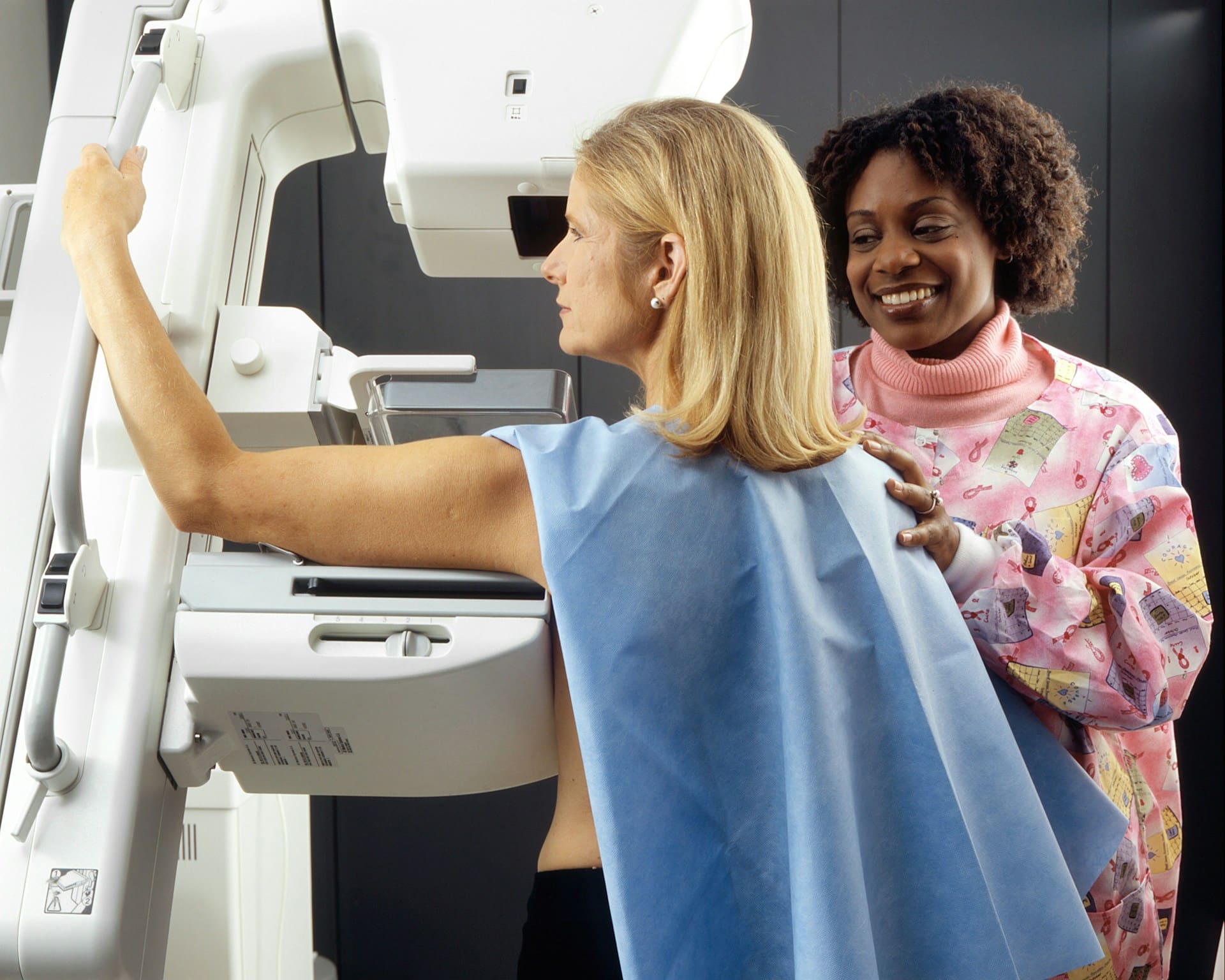When’s Right Time For Your Mammogram? A Guide To Timing And Health Benefits
Breast cancer is a significant health concern, but when detected early, treatment options and survival rates improve dramatically. Mammograms play a crucial role in this early detection process, allowing health professionals to identify changes in breast tissue before they manifest as noticeable lumps or symptoms.
What Is A Mammogram and Its Importance
A mammogram is an X-ray examination specifically designed to detect abnormalities in breast tissue. It serves as the most reliable method for early detection of breast cancer, potentially making a significant difference in patient outcomes. The screening mammogram typically involves two images of each breast taken from different angles, while diagnostic mammograms come into play when there are observable concerns, such as lumps or unusual breast pain. According to the American Cancer Society, the five-year relative survival rate for early-detected breast cancer is approximately 99%. This remarkable statistic underscores the critical nature of regular mammogram screenings.
General Mammogram Guidelines by Age
Navigating the guidelines for mammograms can be challenging, especially with variations in recommendations across medical organizations. Here’s a breakdown based on age:
Under 40
For most individuals under 40, routine mammograms are generally not advised unless there are specific high-risk factors. Those with a family history of breast cancer or known genetic mutations like BRCA1 or BRCA2 should consult with healthcare providers for personalized screening recommendations.
Ages 40-49
This age group experiences varying recommendations, with some organizations suggesting screenings begin at 40, while others recommend starting at 45. Therefore, engaging in shared decision-making with healthcare providers is essential, considering personal and family history, lifestyle influences, and overall health.
Ages 50-74
For those aged 50 to 74, the consensus among major health organizations encourages mammograms every two years, with annual screenings advised for individuals with heightened risk factors. This age group represents a pivotal time for regular breast health monitoring.
Aged 75 and Older
For individuals aged 75 and above, the decision to continue screenings should be based on overall health and life expectancy. If one is in good health and would pursue treatment if diagnosed, screenings may still be appropriate.
Factors Influencing Screening Timing
While age serves as a useful guideline, various factors should also be considered when determining the ideal timing for screenings:
Family History
Individuals with a family history of breast cancer, particularly before menopause, may have a significantly increased risk. In such cases, starting screenings 10 years prior to the age at which a relative was diagnosed is often advised.
Genetic Mutations
Carriers of BRCA1 and BRCA2 mutations face a substantially elevated lifetime risk of breast cancer. Consequently, mammography and MRIs may be recommended as early as their 30s.
Breast Density
Women with dense breast tissue face a dual challenge: a higher risk of breast cancer and the difficulty of spotting tumors in standard mammograms. In such cases, supplemental screenings like ultrasounds or MRIs may be suggested.
Prior Radiation Exposure
Individuals who received chest radiation prior to age 30 should begin annual screenings eight to 10 years after treatment.
Race and Ethnicity
Statistics show that Black women are diagnosed with more aggressive types of breast cancer at younger ages. This reinforces the need for culturally sensitive healthcare practices and early access to mammograms.
Hormone Exposure
Long-term hormone replacement therapy may also heighten breast cancer risk, prompting recommendations for more frequent screenings.
Signs You Should Get Checked Sooner
Understanding your body is vital. If you experience any alarming symptoms, even if you are below the standard age for routine screenings, consider scheduling a mammogram. Symptoms that warrant further investigation include:
– Skin Changes: Redness, scaliness, or flaking of the breast or nipple skin.
– Nipple Changes: Inversion, sudden alterations, or unusual discharge.
– Persistent Pain: Particularly in one spot that does not abate.
– Lumps: Any new thickening in the breast or underarm area.
– Size Changes: Swelling or visible changes in shape or size of the breast.
– Skin Irritation: Including dimpling or irritation of the breast skin.
If any of these indicators arise, reaching out to your healthcare provider is advisable for further evaluation, which may involve a diagnostic mammogram or other tests.
Common Myths about Mammograms Debunked
Misinformation often hampers individuals from seeking crucial health screenings. Here are some common myths dispelled by facts:
– Myth: Mammograms Are Extremely Painful: While some discomfort during breast compression is typical, the procedure is brief, and many find their anxiety over the process is more daunting than the actual screening itself.
– Myth: “I Feel Fine, So I Don’t Need One”: Early-stage breast cancer frequently presents no symptoms. This reality is precisely why routine mammograms are critical—they can detect what isn’t immediately visible or felt.
Regular mammograms not only save lives but also empower individuals to take charge of their breast health. By understanding the significance of these screenings and when to initiate them, you can make informed decisions that align with your unique health profile. Always consult with your healthcare provider to tailor a screening plan that meets your needs. Early attention is a vital component of effective prevention against breast cancer.### Addressing Common Myths about Mammograms
Mammograms are crucial in the early detection of breast cancer, yet numerous misconceptions persist about their safety and necessity. Understanding the facts can empower you to make informed decisions regarding your health.
1. Radiation Exposure Concerns
One prevalent myth surrounding mammograms is the fear of excessive radiation exposure. In reality, mammograms employ a minimal dose of radiation—less than what is found in a standard chest X-ray. Medical guidelines ensure that this radiation level is safe, and research indicates that the benefits of early detection far outweigh any associated risks.
2. Family History Misconceptions
Another common belief is that only individuals with a family history of breast cancer should undergo screening. However, statistical evidence shows that the majority of breast cancer cases arise in individuals without such a history. Genetics is only one risk factor among many, emphasizing the importance of screenings for all women.
3. Age-Related Misunderstandings
Many women may feel they are either too young or too old for their first mammogram. It’s critical to understand that screening guidelines are tailored to individual risk factors rather than solely based on age. If you have concerns or symptoms, discussing them with your healthcare provider is essential—regardless of your age.
Preparing for Your First Mammogram
If you’ve scheduled your first mammogram, knowing what to expect can alleviate any anxiety.
Before Your Appointment
Prior to your visit, it’s advisable to avoid deodorants, lotions, or powders as these can affect the imaging results. Opt for a two-piece outfit since you’ll need to remove your top. Additionally, remember to bring your insurance information and any previous imaging records, if applicable.
What Happens During the Screening
At the imaging center, a qualified technologist will guide you through the process. You will stand in front of a specialized machine, where your breast will be positioned carefully onto a flat plate. Compression may create some discomfort, but it shouldn’t be painful. Typically, two images of each breast are taken from different angles.
After the Exam
Once the mammogram is complete, you can return to your normal activities. Expect to receive results within a few days, either directly or through your referring physician. If any further evaluation is warranted, your provider will discuss potential follow-ups.
Recommendations for Regular Screenings
Frequency of mammogram screenings is largely determined by age, individual risk factors, and medical history.
– Individuals aged 40-49: Screenings are typically recommended every one to two years.
– Ages 50-74: A biennial screening is standard.
– Ages 75 and over: Continuation of screenings is based on health and personal preferences.
For those classified as higher-risk, screenings may need to begin earlier, and more frequent imaging may be required.
Understanding Insurance Coverage for Mammograms
Navigating health insurance coverage for mammograms can be daunting. Fortunately, under the Affordable Care Act, many plans must cover annual or biennial screenings for women over 40 without out-of-pocket expenses. Here are key points to note:
– Most screening mammograms are usually covered in full.
– Diagnostic mammograms may include co-pays or deductibles.
– Medicare provides coverage once every 12 months for women 40 and older.
If you’re uncertain about your coverage, it’s wise to contact your insurance provider or discuss options with your imaging center.
Choosing the Right Imaging Center
Selecting an appropriate imaging center is crucial for your peace of mind. Look for the following qualities:
– Accreditation: Ensure the center is certified by reputable organizations, such as the American College of Radiology.
– Expertise: Seek out centers with experienced staff and board-certified radiologists who specialize in breast imaging.
– Efficient Turnaround Times: Prompt results can help alleviate the stress associated with waiting.
– Flexible Scheduling: Opt for a facility that accommodates various appointment times, including weekends and evenings.
– Transparent Communication: A center that offers clear information regarding the process, billing, and what to expect can enhance your experience.
Prioritizing Your Breast Health
Taking the first step in breast health is crucial, and early detection can be lifesaving. With the right information and support, you can approach mammograms with confidence. Facilities such as Envision Imaging prioritize patient care, offering state-of-the-art diagnostic services in a welcoming environment. The emphasis on fast results and compassionate support can make the screening process much more manageable.
For the best health outcomes, stay informed, maintain regular screenings, and don’t hesitate to reach out to healthcare professionals with any concerns. Your health is worth it.













